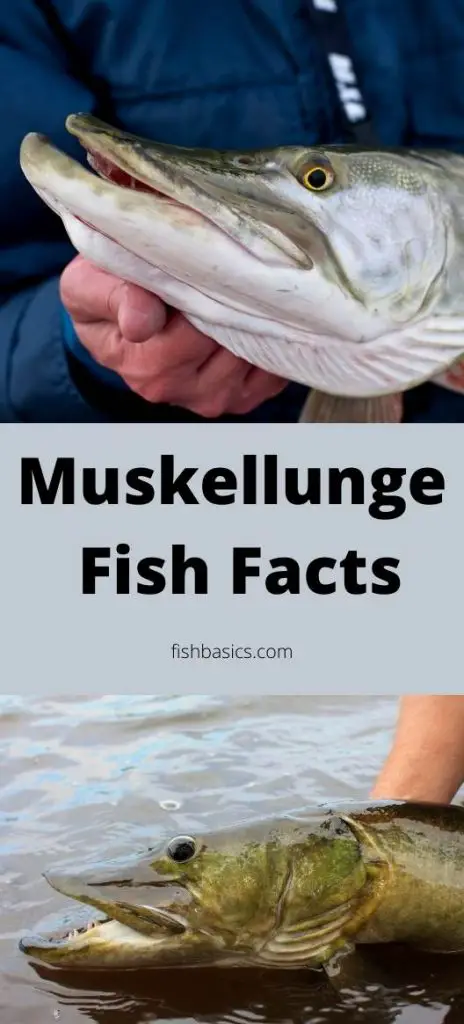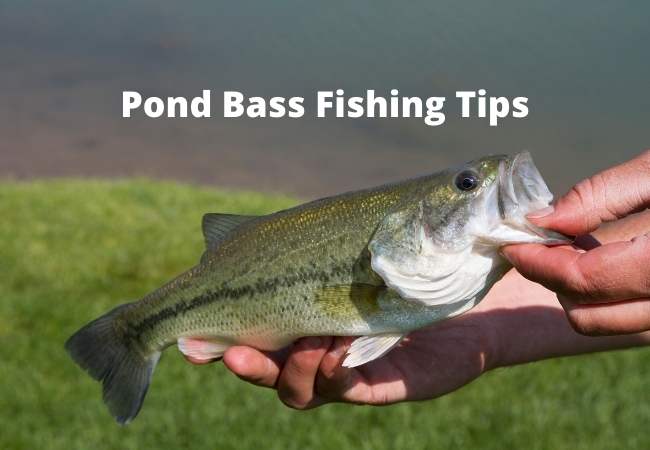Muskellunge fish facts that will help you understand this fish better. Muskie is a very large freshwater fish. They are native to North America and are closely related to the pike family.
Muskellunge Fish Facts
The belly is white or cream-colored, and the fins are lighter colored than other fish in their family. Muskie has very long dorsal fins which can be very sharp and even poisonous.
The color of muskellunge is variable, ranging from olive-green to brown, with a paler belly. The sides are covered in dark, irregular spots separated by light-colored interspaces varying from 21 to 30 scales along the lateral line and 9 to 12 scutes on the ventral side.
In some fish, these spots may have a reddish tint due to the blood vessels below. They have five distinct regular dorsal spines and nine to 12 dorsal soft rays.
Muskellunge Fish Size
The muskellunge usually grows between 3 and 4 feet in length, but there have been known cases of muskies reaching 5 feet or more, weighing as much as 50 pounds (23 kg).
Muskellunge can live up to 30 years and grow very quickly early in life, reaching 10 pounds (4.5 kilograms) within the first year.
The average size of a muskellunge is around 36 inches and 20 pounds. It has greenish-brown on the back and sides, with strong vertical bars along its sides that fade as it ages.
Types of Muskellunge Fish
Muskellunge fish have been reported to attack people. There have been some reports of injuries related to muskellunge fish attacks.
There are three species of muskellunge, the muskellunge (Esox masquinongy masquinongy), the tiger muskellunge (esox lucius) and the ciklid-musky hybrid also known as the hybrid muskellunge. The hybrid muskellunge is a cross-breed between a female northern pike and a male muskellunge.
The tiger muskellunge aka “tiger muskie” is the largest of the three species growing to an average length of 60 inches/152cm with reports reaching upwards of 82 inches/208 cm. They are known to grow large with some specimens weighing up to 100 pounds.
The northern pike aka “northern pike” is the second largest of the three species growing on average 44inches/111cm long but can reach upwards of 53 inches/134cm in length. Northern pikes are known to weigh up to 25 pounds/11.5 kilograms.
Muskellunge Fish Teeth
Muskellunge are known for their long, flat bodies and sharp teeth. Muskellunge have large mouths with the lower jaw longer than the upper jaw. Their mouths are also long, filled with long, sharp teeth that curve outward.
The mouth stretches back as far as the eye, with many small teeth on the premaxilla and larger conical teeth on the maxilla. Muskellunge have large eyes that are set high on their head.
Muskellunge Fish Attacks
Muskellunge attack people for one or all of the following reasons:
1. Predation – The muskellunge attacks on humans are believed to be predatory in nature, meaning that they mistake humans for their natural prey items such as fish and turtles. This type of attack is the rarest of all muskellunge attacks.
2. Territoriality – Muskellunge are aggressive to other muskellunge, therefore they may attack if they feel threatened by another fish or person. They may also show territorial behavior towards other fish that are larger than them
3. Single instances – The muskellunge attacks can also be a case of mistaken identity where the fish sees a shiny object as prey, or as an angler that is pulling the muskellunge out of its habitat.
4. In defense – The muskellunge may attack in self-defense if it feels threatened by a human being for example.
How To Avoid Muskellunge Fish Attacks
Muskellunge attacks people in various ways, including biting the legs to pulling the person underwater.
It is important to recall that muskellunge are wild animals and deserve respect, just like any other wild animal. The best way of preventing an accident or injury when enjoying nature is by being informed. Here are some tips for being safe in case you run into a muskellunge:
1. Always keep your distance – When fishing, always keep your distance from the shoreline and remember to stay well back from the water’s edge. If you see that the fish is agitated then it is best to leave it alone or move away slowly.
2. Do not assume that they are not there – Some muskellunge are more tolerant of humans than others, so it is important to be aware that they may be around. Never turn your back on the water for an extended amount of time and be careful when swimming.
3. Keep small children close – This follows the first rule; never turn your back on the water for an extended amount of time. Also, if a muskellunge is around, you should keep your children close since they cannot be relied upon to follow safety procedures.
4. Do not handle them – Unless you know what you are doing, do not go fishing for muskellunge with the intention of catching them and especially not with your bare hands. Much dangerous fish are mistaken for muskellunge and vice versa, so it is always best to go fishing with equipment that will make them easier to catch.
5. Be safe – Always wear personal protective equipment such as a life vest when boating or kayaking. Also, make sure you are wearing non-slip footwear when on the boat.
6. Be informed – Know how to identify a muskellunge and what you should do if you encounter one in the wild, especially if it is close to the shore or agitated.
Muskellunge are not usually aggressive towards humans, but they can become so under certain circumstances.
Muskellunge Fish Facts
Muskellunge fish have two pectoral fins that can also be poisonous, and it is advised to not eat them or to clean the meat without gloves as it may cause numbness in human hands.
I hope you have learned something new from this post on Muskellunge fish facts. Don’t forget to follow me on Fisbasics Pinterest for more on different types of fish.










So these things are like fresh water barracuda?